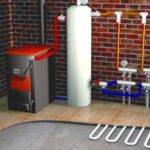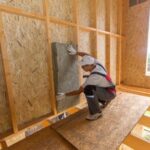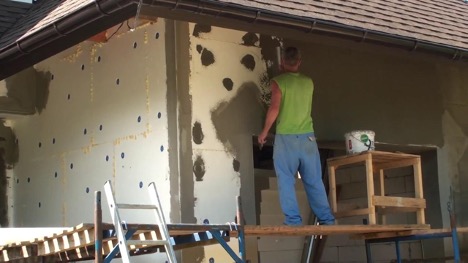Finishing the wall behind the radiator: how to cover it, is it necessary to plaster and putty
The decoration of the wall behind the radiator plays an important role not only in the aesthetic perception of the room, but also in maintaining the integrity and safety of the wall covering. Heat and humidity from radiators can have a negative impact on the wall over time, causing peeling paint, mold and other problems.
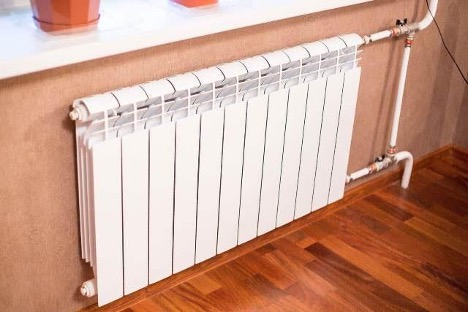
The content of the article
Selection of finishing materials
One of the key questions is: how to cover the wall behind the battery? When choosing materials for finishing the wall behind the battery, it is important to consider the conditions in which they will be used. The main factors here are increased temperature and humidity in the battery area. Materials must not only be aesthetically attractive, but also resistant to heat, moisture and not prone to deformation. It is also important that they are safe and do not emit harmful substances when heated.
Here are some of the most suitable finishing materials:
- Waterproof paints – these are ideal for walls as they form a protective layer that is resistant to moisture and heat.
- Heat-resistant special wallpaper designed for use in high temperature conditions.
- Ceramic tiles are highly resistant to moisture and heat and are easy to clean.
- Decorative panels: Can be made from a variety of materials, including metal or heat-resistant plastic.
When choosing materials for finishing a niche for a battery, it is also recommended to pay attention to their appearance and ease of installation. It is necessary to take into account the overall interior of the room so that the material fits harmoniously into the design. It is also important to consider the ease of care of the finishing material, since the area behind the battery is often difficult to access for regular cleaning. UV resistance will also be an important factor if the wall is next to a window.
Surface preparation: plaster and putty
Before finishing the wall behind the battery, it is necessary to properly prepare the surface. It is important to decide what comes first: plastering or installing heating equipment. Plastering is usually done first, as it creates a smooth base for subsequent finishing. The process may include the following steps:
- cleaning the wall from old paint, wallpaper and other coatings;
- sealing cracks and irregularities with special mixtures;
- applying plaster and putty to level the surface.
What should not be used when preparing the surface
When preparing the surface of the wall behind the battery, it is important to avoid using materials that cannot withstand high temperatures and humidity. For example, ordinary water-based paints or paper-based wallpaper can quickly lose their original appearance and begin to peel off or become stained by moisture.It is also not recommended to use conventional gypsum plaster and putty, as they can shrink and crack under the influence of heat from radiators. Instead, you should give preference to specialized heat-resistant and moisture-resistant materials designed for use in conditions of high temperature and humidity.
Methods for improving the space behind the battery
How to make the wall behind the radiator more functional and attractive? Consider the following methods:
- Installing heat-reflecting screens will not only help protect the wall, but also improve heating efficiency.
- Consider decorating this space with decorative panels or coverings that complement the overall design of the room.
- Make sure you have easy access to the wall behind the radiator, this will make the cleaning and repair process easier.
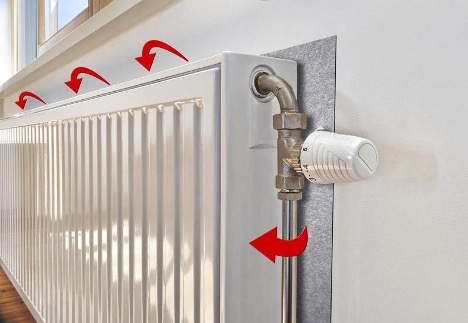
Mistakes when finishing the wall behind the battery and how to avoid them
One of the common mistakes when finishing the wall behind the radiator is the use of inappropriate materials. Often people choose paints, wallpapers or finishing materials that are not intended for use in conditions of high temperatures and humidity. This can lead to their rapid deterioration, peeling or mold formation. To avoid this mistake, it is necessary to carefully select materials, paying attention to their heat resistance and moisture resistance.
Another mistake is insufficient or incorrect preparation of the wall surface before finishing. Often the walls behind the radiators have cracks, chips or irregularities that need to be carefully repaired and leveled. Neglecting this step may result in the new coating being uneven or starting to peel.Before starting work, it is important to thoroughly clean the surface of old coatings and dirt and level it with plaster or putty.
The technique of applying finishing materials also plays a significant role. For example, when applying paint or wallpaper paste, it is important to maintain an even layer to avoid spots and unevenness. Improper application can cause the material to quickly peel or bubble. It is also important to follow the manufacturer's recommendations regarding application conditions, such as room temperature and humidity.
The last common mistake is underestimating the importance of ventilation in the radiator area. Good ventilation helps prevent moisture buildup and overheating of the wall, which is especially important to prevent the development of mold and mildew. When planning the finishing, the possibility of ensuring free air exchange in this area should be taken into account. For example, you can use special ventilation grilles or leave a small space between the wall and the battery.
Conclusion
Finishing the wall behind the heating radiator is not only a matter of aesthetics, but also functionality. The correct choice of materials and careful surface preparation will ensure the durability and attractive appearance of the wall. In addition, effective finishing will help improve the thermal insulation of the room, increasing living comfort.


